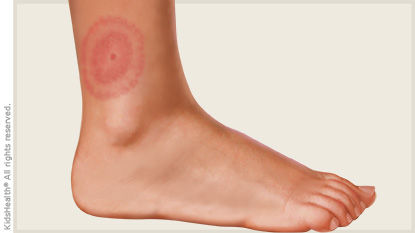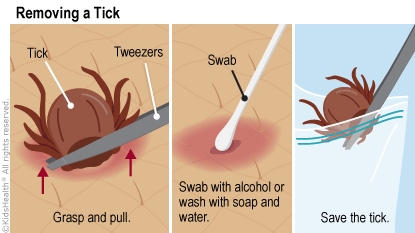- Home
- Parents Home
- Allergy Center
- Asthma Center
- Cancer Center
- Diabetes Center
- A to Z Dictionary
- Emotions & Behavior
- First Aid & Safety
- Food Allergy Center
- General Health
- Growth & Development
- Flu Center
- Heart Health
- Homework Help Center
- Infections
- Diseases & Conditions
- Nutrition & Fitness Center
- Play & Learn Center
- School & Family Life
- Pregnancy Center
- Newborn Center
- Q&A
- Recipes
- Sports Medicine Center
- Doctors & Hospitals
- Videos
- Para Padres
- Home
- Kids Home
- Asthma Center
- Cancer Center
- Movies & More
- Diabetes Center
- Getting Help
- Feelings
- Puberty & Growing Up
- Health Problems of Grown-Ups
- Health Problems
- Homework Center
- How the Body Works
- Illnesses & Injuries
- Nutrition & Fitness Center
- Recipes & Cooking
- Staying Healthy
- Stay Safe Center
- Relax & Unwind Center
- Q&A
- Heart Center
- Videos
- Staying Safe
- Kids' Medical Dictionary
- Para Niños
- Home
- Teens Home
- Asthma Center
- Be Your Best Self Center
- Cancer Center
- Diabetes Center
- Diseases & Conditions
- Drugs & Alcohol
- Expert Answers (Q&A)
- Flu Center
- Homework Help Center
- Infections
- Managing Your Medical Care
- Managing Your Weight
- Nutrition & Fitness Center
- Recipes
- Safety & First Aid
- School & Work
- Sexual Health
- Sports Center
- Stress & Coping Center
- Videos
- Your Body
- Your Mind
- Para Adolescentes
Lyme Disease
What Is Lyme Disease?
Lyme disease is the leading tick-borne disease in the United States. It's most common in the Northeast and the northern midwestern states.
Lyme disease is caused by a type of found in animals like mice and deer. Deer ticks (also called black-legged ticks) that feed on these animals can then spread the bacteria to people through tick bites.
You probably won't see it happening. Deer ticks are tiny, so it's very hard to see them. Immature ticks (called "nymphs") are about the size of a poppy seed. Adult ticks are about the size of a sesame seed.
It's easy to overlook a tick bite. Many people who get Lyme disease don't remember being bitten. The good news is that most tick bites don't lead to Lyme disease. But it still helps to know what to watch for.
What Are the Signs & Symptoms of Lyme Disease?
Lyme disease can affect different body systems, such as the nervous system, joints, skin, and heart. The symptoms of Lyme disease are often described as happening in three stages. Not everyone with Lyme has all of these, though:
- A circular rash at the site of the tick bite, typically within 1–2 weeks of infection, often is the first sign of infection. It's considered typical of Lyme disease, but many people never get one.

The rash sometimes has a "bull's-eye" appearance, with a central red spot surrounded by clear skin that is ringed by an expanding red rash. It also can appear as an growing ring of solid redness. It's usually flat and painless, but sometimes can be warm to the touch, itchy, scaly, burning, or prickling. The rash may look and feel very different from one person to the next. It can be harder to see on people with darker skin tones, where it can look like a bruise. It gets bigger for a few days to weeks, then goes away on its own. A person also may have flu-like symptoms such as fever, tiredness, headache, and muscle aches.
- Symptoms of the initial illness may go away on their own. But in some people, the infection spreads to other parts of the body. Symptoms of this stage usually start several weeks after the tick bite, even in those who didn't have the rash. A person may feel very tired and unwell, or have more areas of rash that aren't at the site of the bite.
Lyme disease can affect the heart. This can lead to an irregular heart rhythm, which can cause dizziness or heart palpitations. It can also spread to the nervous system, causing facial paralysis (Bell's palsy) or meningitis. - The last stage of Lyme disease happens if the early stages weren't found or treated. Symptoms can begin anytime from weeks to years after an infectious tick bite. In kids and teens, this is almost always in the form of arthritis, with swelling and tenderness, particularly in the knees or other large joints.
This wide range of symptoms can make Lyme disease hard for doctors to diagnose. But they can order blood tests to look for signs of the body's reaction to Lyme disease.
When Should I Call the Doctor?
If a tick bites you, call your doctor. Other conditions can cause similar symptoms, so it's always a good idea to discuss them with your doctor. That way you can get checked and treated, if needed. Call right away if you get a red-ringed rash, lasting flu-like symptoms, joint pain or a swollen joint, or facial paralysis.
How Is Lyme Disease Treated?
Doctors usually treat Lyme disease with a 2- to 4-week course of antibiotics. People whose Lyme disease is diagnosed quickly and treated with antibiotics almost always have a good outcome. They usually feel back to normal within several weeks of starting treatment.
Is Lyme Disease Contagious?
Lyme disease is not contagious, so you can't catch it from another person. But you can get it more than once from ticks that live on deer, in the woods, or travel on your pets. So always be cautious, even if you've already had Lyme disease.
Can Lyme Disease Be Prevented?
There's no sure way to avoid getting Lyme disease. But you can minimize your risk. Be aware of ticks when you're in high-risk areas. If you work outdoors or spend time gardening, fishing, hunting, or camping, take precautions:
- Wear closed shoes or boots, long-sleeved shirts, and long pants. Tuck your pant legs into your shoes or boots to prevent ticks from crawling up your legs.
- Use an insect repellent containing 10% to 30% DEET (N,N-diethyl-meta-toluamide).
- Wear light-colored clothing to help you see ticks more easily.
- Keep long hair pulled back or wear a hat for protection.
- Don't sit on the ground outside.
- Check yourself for ticks regularly — both indoors and outdoors. Wash your clothes and hair after leaving tick-infested areas.
If you use an insect repellent containing DEET, follow the directions on the product's label and don't overapply it. Place DEET on shirt collars and sleeves and pant cuffs, and only use it directly on exposed areas of skin. Be sure to wash it off when you go back indoors.
No vaccine for Lyme disease is currently on the market in the United States.
How Do I Remove a Tick?
You should know how to remove a tick just in case one lands on you or a friend. To be safe, remove the tick as soon as possible.

If you find a tick:
- Call your doctor, who may want you to save the tick after removal so that the tick can later be identified as the type that may carry Lyme disease. You can put the tick in a sealed container to preserve it.
- Use tweezers to grasp the tick firmly at its head or mouth, next to your skin.
- Pull firmly and steadily on the tick until it lets go of the skin. If part of the tick stays in your skin, don't worry. It will eventually come out. But call your doctor if you notice any irritation in the area or symptoms of Lyme disease.
- Swab the bite site with alcohol.
Note: Don't use petroleum jelly or a lit match to kill a tick. They won't get the tick off your skin quickly enough, and may just cause it to burrow deeper into your skin.

© 1995- The Nemours Foundation. KidsHealth® is a registered trademark of The Nemours Foundation. All rights reserved.
Images sourced by The Nemours Foundation and Getty Images.
